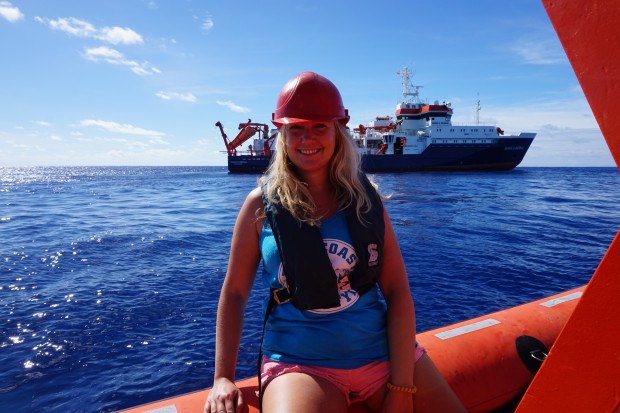 My work is centered around global climate change, since this is one of the most pressing challenges our society is facing at the moment. I have two main research foci, one directed into the future and one directed into the past. In combination with temperature reconstructions, accurate atmospheric paleo-CO2 estimates are necessary to validate models that aim at predicting global temperature rise related to CO2 -forcing mechanisms. I am working at the development of new methods to reconstruct atmospheric pCO2 going back in time using marine calcifying plankton- pteropods and foraminifera, which are present in all oceans. I use state-of-the art analytical techniques such as Laser-Ablation-ICP-Mass -Spectrometry to measure the trace-elemental composition of their shells. Currently I am establishing a pCO2 calibration using pteropods that have been cultured under a range of pCO2, which I will then implement on pteropod samples from a 10-year sediment trap in the Arctic and on an Arctic sediment core.
My work is centered around global climate change, since this is one of the most pressing challenges our society is facing at the moment. I have two main research foci, one directed into the future and one directed into the past. In combination with temperature reconstructions, accurate atmospheric paleo-CO2 estimates are necessary to validate models that aim at predicting global temperature rise related to CO2 -forcing mechanisms. I am working at the development of new methods to reconstruct atmospheric pCO2 going back in time using marine calcifying plankton- pteropods and foraminifera, which are present in all oceans. I use state-of-the art analytical techniques such as Laser-Ablation-ICP-Mass -Spectrometry to measure the trace-elemental composition of their shells. Currently I am establishing a pCO2 calibration using pteropods that have been cultured under a range of pCO2, which I will then implement on pteropod samples from a 10-year sediment trap in the Arctic and on an Arctic sediment core.
With respect to future climate, I am interested in the detailed biomineralization process of these plankton organisms. Understanding the underlying cell machinery in the formation of biogenic calcium carbonate is the basis to develop reliable proxies and to assess the effect of current climate change related threats, such as Ocean Acidification and Ocean Warming. At the moment, I am correlating the flux of pteropods from a 20+ year Antarctic Sediment trap to Environmental Parameters to identify the driving forces. This is important on the one hand, to be able to predict the effect of Climate Change on Southern Ocean pteropod populations. On the other hand, pteropods are an important part of the C-cycle through the formation of their calcium carbonate shells. Quantifying the flux helps to better estimate the global C-cycle.
